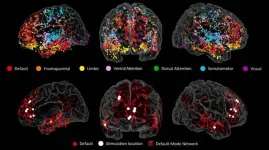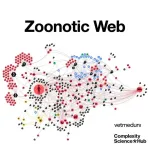(Press-News.org) Findings refute former consensus that pregnancies post-transplant are nearly impossible, highlight need for increased fertility counseling
(WASHINGTON, July 15, 2024) — Despite treatment-related fertility challenges, female patients can become pregnant and give birth to healthy children after undergoing allogeneic hematopoietic cell transplantation (alloHCT), according to a study published in Blood.
During alloHCT, stem cells from a healthy donor are transplanted to individuals with hematologic cancers or benign hematologic disorders such as leukemia and sickle cell disease. Procedural improvements in the administration of alloHCT have led to more long-term survivors, especially young adults who hope to have children. However, transplant-related morbidity, long-term medication use, and prior receipt of total body irradiation or high-dose chemotherapies all pose significant fertility risks.
“Fertility is a very important topic for young female patients,” said Katja Sockel, MD, senior physician at University Hospital Carl Gustav Carus Dresden in Germany, and lead study author. “Some patients even opt out of receiving certain treatments because of concerns about fertility. For young adult cancer survivors especially, the return to a normal life includes family planning.”
In the largest systemic study to date of adult female alloHCT recipients, Dr. Sockel and her team retrospectively analyzed data from the German Registry for Stem Cell Transplantation to estimate pregnancy and birth rates and determine risk factors for female patients aged 18 to 40. Of the 2,654 total study participants, 50 women reported 74 pregnancies, 57 of which resulted in live births, with a median time from transplantation to first pregnancy of 4.7 years.
The likelihood of pregnancy was positively correlated with women aged 18 to 35 years at the time of alloHCT, with a median age of pregnancy of 29.6 years. Despite the annual first birth rate for this patient group being more than six times lower than that of the general German population, these study results refute the widely accepted consensus that pregnancy is not possible after alloHCT. And while some of the study’s recorded pregnancies were the result of assisted reproductive technology (ART), 72% of participants reported spontaneous pregnancies.
“Some study participants reported that they had not taken measures to prevent pregnancy because their doctor told them conception was not possible,” said Dr. Sockel. “Spontaneous pregnancies should not be underestimated, and female patients should be educated about potential fertility restoration post-alloHCT to prevent unplanned or unwanted pregnancies.”
A few factors were associated with a greater chance of a first live birth, including a reduced-intensity conditioning regimen, transplants for non-malignant conditions, and no or lower-dose total body irradiation. Maternal complications occurred in 25 out of 52 pregnancies, the most common of which were vascular (occurring in 16 pregnancies), including preeclampsia, edema, and hypertension. Although they did not exceed the complication risk of the general population, close interdisciplinary monitoring by transplant physicians and gynecologists is recommended to avoid maternal complications.
Fetal outcomes were collected from 44 pregnancies and were generally positive, without increased rates of childhood illnesses or developmental delays compared to the general population. However, there were higher incidences of preterm delivery (birth before 37 weeks of pregnancy) and low birth weight (1,500-2,500 g) in this group. Ten pregnancies resulted in preterm delivery, with the majority occurring between gestation weeks 28 and 32. Additionally, six newborns had low birth weights, while one had a very low birth weight (less than 1,500 g). Overall, the live birth rate for this group was 78%, comparable to that of the general population.
“The results of this study show that female alloHCT recipients can achieve successful and safe pregnancies,” said Dr. Sockel. “These findings help provide a basis for counseling young women of childbearing age and raising awareness of and funding for different ART techniques so that patients can have a normal life after alloHCT.”
There were a few limitations to the study given its retrospective nature. Measures of fertility, such as ovarian function before alloHCT or anti-Müllerian hormone levels, could not be obtained, and challenges arose in collecting comprehensive data from participant interviews retrospectively. Additionally, the study relied on self-reported pregnancy and pregnancy outcomes, which may have led to the underreporting of unsuccessful pregnancies. Finally, some types of ART were not available to patients during the decade-long study.
The authors hope prospective studies will advance understanding of how pre-alloHCT treatments, including new and targeted therapies, impact fertility in young patients with cancer. This knowledge will help move towards a more individualized therapy that balances anti-tumor effectiveness with minimizing toxicity and preserving fertility.
# # #
Blood (www.bloodjournal.org), the most cited peer-reviewed publication in the field of hematology, is available weekly in print and online. Blood is a journal of the American Society of Hematology (ASH) (www.hematology.org).
Claire Whetzel, 202-629-5085
cwhetzel@hematology.org
END
Safe, successful pregnancies possible after alloHCT
Findings refute former consensus that pregnancies post-transplant are nearly impossible, highlight need for increased fertility counseling
2024-07-15
ELSE PRESS RELEASES FROM THIS DATE:
Santiago Núñez-Corrales on ‘NCSA’s Mission in Quantum Computing’
2024-07-15
Editor’s note: This is part of a series of virtual essays from NCSA experts on current topics impacting the field of high-performance computing and research.
NCSA’s Mission in Quantum Computing
By Santiago Núñez-Corrales, NCSA Quantum Lead Research Scientist
The fact that physical laws in our universe contain the recipe to perform computation is nothing short of extraordinary. John Archibald Wheeler described how intricate and intense the relationship is between physics and information in his foundational paper in 1991, one that bears profound consequences ...
Study pinpoints origins of creativity in the brain
2024-07-15
Have you ever had the solution for a tough problem suddenly hit you when you’re thinking about something entirely different? Creative thought is a hallmark of humanity, but it’s an ephemeral, almost paradoxical ability, striking unexpectedly when it’s not sought out.
And the neurological source of creativity—what’s going on in our brains when we think outside the box—is similarly elusive.
But now, a research team led by a University of Utah Health researcher and based in Baylor College of Medicine has used a precise method of brain imaging to unveil how different parts of the brain ...
Breakthrough wildlife tracking technology that adheres to fur delivers promising results from trials on wild polar bears
2024-07-15
TORONTO, July 15, 2024 – Studying polar bears just became a lot easier with new “burr on fur” trackers which confirmed scientists’ belief that subadult and adult males spend most of their time on land lazing around, conserving energy until the ice returns.
A multi-institutional research team led by York University and including the University of Alberta, Environment and Climate Change Canada, Manitoba Sustainable Development, Ontario Ministry of Natural Resources and Forestry, and Polar Bears International, used three ...
Study unveils complexity of zoonotic transmission chains
2024-07-15
[Vienna, July 11 2024] — Researchers from the Complexity Science Hub and the University of Veterinary Medicine Vienna have dissected the complex interactions involved in zoonoses, which affect worldwide over two billion people annually. They introduce the concept of a "zoonotic web," a detailed network representation of the relationships between zoonotic agents, their hosts, vectors, food sources, and the environment.
"Zoonotic diseases, which can be transmitted between animals and humans, are a significant public health concern, and our study highlights the importance of a holistic approach to understanding and managing these ...
30-year risk of cardiovascular disease may help inform blood pressure treatment decisions
2024-07-15
Research Highlights:
A comparison of two tools for calculating cardiovascular disease risk found that if only the current 10-year risk thresholds are applied, fewer adults may be recommended for blood pressure-lowering medication. The tools, The American Heart Association’s new PREVENTTM tool and the Pooled Cohort Equations, were applied to a cross-sectional sample of adults from NHANES datasets with stage 1 hypertension who did not report having CVD.
PREVENT can additionally be used to calculate an individual’s 30-year risk ...
Off-the-shelf wearable trackers provide clinically-useful information for patients with heart disease
2024-07-15
Monitoring of heart rate and physical activity using consumer wearable devices was found to have clinical value for comparing the response to two treatments for atrial fibrillation and heart failure.
The study published in Nature Medicine examined if a commercially-available fitness tracker and smartphone could continuously monitor the response to medications, and provide clinical information similar to in-person hospital assessment.
The wearable devices, consisting of a wrist band and connected smartphone, collected a vast amount of data on the response to two different medications prescribed ...
Visualizing addiction: How new research could change the way we fight the opioid epidemic
2024-07-15
New research from a Max Planck Florida Institute for Neuroscience researcher could transform how we understand the way opioids affect the brain. Despite significant discussion surrounding the ongoing opioid crisis, current understanding of how opioids function in the brain is quite limited. This is primarily due to challenges in observing and measuring opioid effects in the brain in real-time. However, a recent technological breakthrough, led by Dr. Lin Tian and her research team and collaborators, recently published in Nature Neuroscience, has overcome these limitations and is set to transform how scientists study opioid signaling ...
Caught in the actinium
2024-07-15
The element actinium was first discovered at the turn of the 20th century, but even now, nearly 125 years later, researchers still don’t have a good grasp on the metal’s chemistry. That’s because actinium is only available in extremely small amounts and working with the radioactive material requires special facilities. But to improve emerging cancer treatments using actinium, researchers will need to better understand how the element binds with other molecules.
In a new study led by the Department of Energy’s Lawrence Berkeley National Laboratory (Berkeley Lab), ...
Out-of-pocket medical costs are substantial and rising for privately insured men with abnormal prostate cancer screening results who require further diagnostic testing
2024-07-15
Prostate-specific antigen (PSA) screening aims to identify men who may harbor potentially lethal prostate cancer, and those with high PSA results often require more extensive (and expensive) diagnostic testing to establish a diagnosis. New research reveals that the out-of-pocket costs for such additional tests are substantial, common, and rising. The findings are published by Wiley online in CANCER, a peer-reviewed journal of the American Cancer Society.
Abnormal screening tests (i.e., elevated PSA) warrant ...
A new method for sustainable synthesis of acetylene from carbon dioxide
2024-07-15
Since its discovery, in 1836, acetylene has emerged as an essential chemical compound in industry, widely used as a chemical building block and fuel. It has applications in the raw material for resins, such as vinyl chloride, welding gas, and illumination. Recent developments aimed at reducing the dependence on petroleum feedstocks have shown that acetylene is a promising platform molecule for producing various base chemicals. Additionally, polyacetylene, a crucial semiconducting material, is made from acetylene. Currently, acetylene is mainly produced through two methods: ...
LAST 30 PRESS RELEASES:
Why nail-biting, procrastination and other self-sabotaging behaviors are rooted in survival instincts
Regional variations in mechanical properties of porcine leptomeninges
Artificial empathy in therapy and healthcare: advancements in interpersonal interaction technologies
Why some brains switch gears more efficiently than others
UVA’s Jundong Li wins ICDM’S 2025 Tao Li Award for data mining, machine learning
UVA’s low-power, high-performance computer power player Mircea Stan earns National Academy of Inventors fellowship
Not playing by the rules: USU researcher explores filamentous algae dynamics in rivers
Do our body clocks influence our risk of dementia?
Anthropologists offer new evidence of bipedalism in long-debated fossil discovery
Safer receipt paper from wood
Dosage-sensitive genes suggest no whole-genome duplications in ancestral angiosperm
First ancient human herpesvirus genomes document their deep history with humans
Why Some Bacteria Survive Antibiotics and How to Stop Them - New study reveals that bacteria can survive antibiotic treatment through two fundamentally different “shutdown modes”
UCLA study links scar healing to dangerous placenta condition
CHANGE-seq-BE finds off-target changes in the genome from base editors
The Journal of Nuclear Medicine Ahead-of-Print Tip Sheet: January 2, 2026
Delayed or absent first dose of measles, mumps, and rubella vaccination
Trends in US preterm birth rates by household income and race and ethnicity
Study identifies potential biomarker linked to progression and brain inflammation in multiple sclerosis
Many mothers in Norway do not show up for postnatal check-ups
Researchers want to find out why quick clay is so unstable
Superradiant spins show teamwork at the quantum scale
Cleveland Clinic Research links tumor bacteria to immunotherapy resistance in head and neck cancer
First Editorial of 2026: Resisting AI slop
Joint ground- and space-based observations reveal Saturn-mass rogue planet
Inheritable genetic variant offers protection against blood cancer risk and progression
Pigs settled Pacific islands alongside early human voyagers
A Coral reef’s daily pulse reshapes microbes in surrounding waters
EAST Tokamak experiments exceed plasma density limit, offering new approach to fusion ignition
Groundbreaking discovery reveals Africa’s oldest cremation pyre and complex ritual practices
[Press-News.org] Safe, successful pregnancies possible after alloHCTFindings refute former consensus that pregnancies post-transplant are nearly impossible, highlight need for increased fertility counseling




